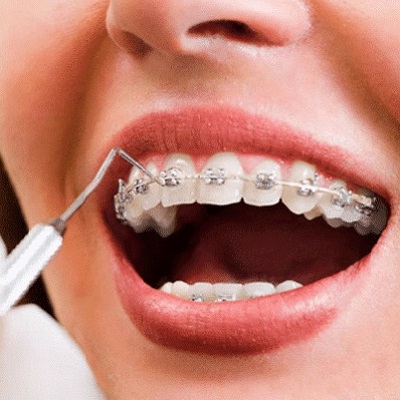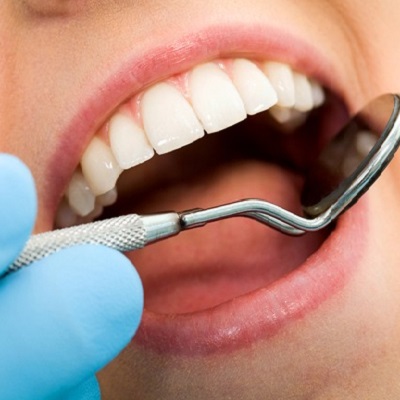When it comes to achieving a healthy, straight smile, orthodontic treatments are often misunderstood. These misconceptions sometimes prevent people from seeking the care they need. By addressing these myths, Orthodontists help individuals make informed decisions about improving their oral health. In this article, we’ll explore the most common myths about orthodontic treatments and reveal the facts behind them to ensure clarity and confidence in your treatment choices.
Myth 1: Orthodontic Treatment Is Only for Kids:
While many associate braces and other orthodontic treatments with teenagers, this misconception couldn’t be further from the truth. Adults of all ages can benefit from orthodontic care, and advancements in technology have made treatments more discreet and effective.
- Fact Check: Adults make up a significant percentage of orthodontic patients. Conditions like crowding, spacing, and bite issues can be addressed at any age.
- Modern Solutions: Options like Invisalign and ceramic braces cater to adults seeking subtle treatments.

Myth 2: Braces Are Painful:
The thought of braces often conjures fears of discomfort. This myth stems from outdated practices and lacks consideration of modern orthodontic innovations.
- Fact Check: While there may be slight pressure after adjustments, advancements in materials and techniques have minimized discomfort.
- Patient Comfort: Orthodontists now use lighter wires and advanced systems designed to make treatments as comfortable as possible.
Myth 3: Orthodontists and Dentists Are the Same:
Many believe that visiting a dentist is equivalent to seeking an orthodontist’s expertise. This common myth overlooks the specialized training orthodontists undergo.
- Fact Check: Orthodontists are dental specialists with an additional 2-3 years of training focused on aligning teeth and correcting jaw issues.
- Specialized Care: Orthodontists have expertise in diagnosing and treating complex alignment and bite problems.
Myth 4: Braces Take Years to Work:
The belief that braces require several years to achieve results can discourage people from considering treatment. This myth doesn’t reflect modern orthodontic approaches.
- Fact Check: The duration of treatment varies based on individual needs, but many patients see results within 12-18 months.
- Accelerated Treatments: Technologies like self-ligating braces and clear aligners often reduce treatment time.
Myth 5: Braces Are Only for Cosmetic Purposes:
While improving the appearance of your smile is a significant benefit of braces, this myth ignores the health advantages they offer.
- Fact Check: Orthodontic treatments correct functional issues such as misaligned bites, jaw pain, and difficulty chewing.
- Health Benefits: Properly aligned teeth are easier to clean, reducing the risk of cavities and gum disease.
Myth 6: DIY Orthodontics Are Just as Effective:
With the rise of online tutorials and at-home kits, many assume they can skip professional care. This misconception can lead to serious oral health complications.
- Fact Check: Orthodontic treatments require professional supervision to ensure safe and effective results.
- Risks of DIY: Unsanctioned methods can lead to permanent damage, including tooth loss and gum issues.
Myth 7: Orthodontic Treatments Are Too Expensive:
Cost concerns often deter people from seeking care. However, this myth doesn’t account for the variety of affordable options available.
- Fact Check: Many orthodontists offer flexible payment plans and work with insurance to make treatments accessible.
- Long-Term Savings: Correcting alignment issues early can prevent costly dental procedures in the future.

Myth 8: Braces Are Always Noticeable:
The image of bulky metal braces often stops people from exploring orthodontic care. Modern advancements have made this myth outdated.
- Fact Check: Discreet options like clear aligners and ceramic braces are nearly invisible.
- Aesthetic Solutions: Lingual braces, placed on the back of the teeth, provide a completely hidden alternative.
Myth 9: Orthodontic Treatment Weakens Teeth:
Some fear that braces and other treatments will harm their teeth, a misconception that stems from a lack of understanding about proper care.
- Fact Check: Orthodontic appliances do not damage teeth when patients maintain good oral hygiene.
- Preventive Care: Regular brushing, flossing, and dental check-ups ensure healthy teeth throughout treatment.
Myth 10: Retainers Are Optional:
Once braces come off, many assume their teeth will stay perfectly aligned without additional care. This myth can undermine the long-term success of treatment.
- Fact Check: Retainers are essential for maintaining results as teeth can shift back over time.
- Commitment Matters: Wearing retainers as prescribed ensures a lifetime of straight teeth.
Understanding the Role of Orthodontists:
Orthodontists are specialized professionals dedicated to improving oral health and aesthetics through advanced treatments. They diagnose and treat a range of issues, including:
- Overbites, underbites, and crossbites
- Crowded or spaced teeth
- Jaw alignment problems
Choosing an orthodontist ensures you receive personalized care tailored to your unique needs, guaranteeing safe and effective results.
Benefits of Orthodontic Treatments:
Orthodontic care goes beyond aesthetics, offering numerous advantages:
- Improved Oral Health: Straight teeth are easier to clean, reducing the risk of cavities and gum disease.
- Enhanced Confidence: A beautiful smile boosts self-esteem and leaves a lasting impression.
- Better Functionality: Correcting bite issues improves chewing and speaking.
- Prevention of Future Problems: Addressing misalignment early prevents complications such as tooth wear and jaw pain.
How to Choose the Right Orthodontist:
Selecting an experienced orthodontist is crucial for a successful treatment journey. Here’s what to consider:
- Credentials and Training: Ensure your orthodontist is board-certified and has specialized training.
- Technology Used: Look for clinics offering modern treatments like clear aligners and 3D imaging.
- Patient Reviews: Testimonials and ratings provide insight into the quality of care.
- Payment Options: Flexible financing plans make treatments accessible.
Orthodontic Treatment Options:
Modern orthodontics offers a variety of solutions tailored to individual needs:
- Traditional Braces: Effective for severe alignment issues.
- Clear Aligners: Discreet and removable options like Invisalign.
- Ceramic Braces: Tooth-colored brackets for a less noticeable look.
- Lingual Braces: Hidden braces placed on the back of teeth.
- Self-Ligating Braces: Faster and more comfortable treatments.
Maintaining Results After Treatment:
After completing orthodontic treatment, follow these tips to preserve your results:
- Wear Retainers: Consistent use prevents teeth from shifting.
- Practice Good Oral Hygiene: Brush and floss regularly to keep teeth healthy.
- Avoid Hard and Sticky Foods: Protect your teeth and retainers from damage.
- Regular Check-Ups: Visit your orthodontist for routine assessments.
Orthodontic treatments are transformative, enhancing both oral health and self-confidence. By debunking these common myths, we hope to encourage more individuals to seek the care they deserve from qualified orthodontists. Remember, a straight smile is an investment in your overall well-being.
